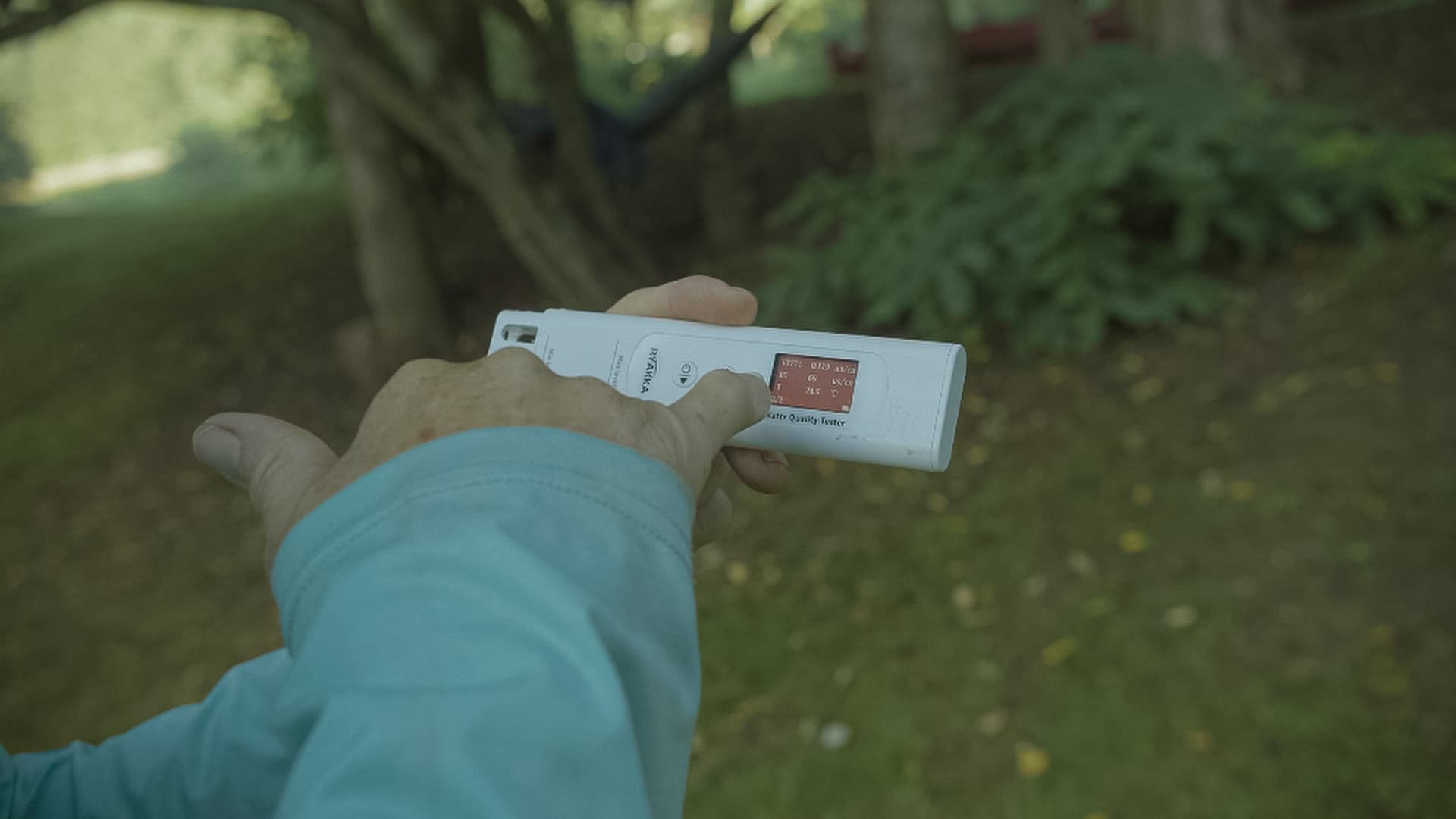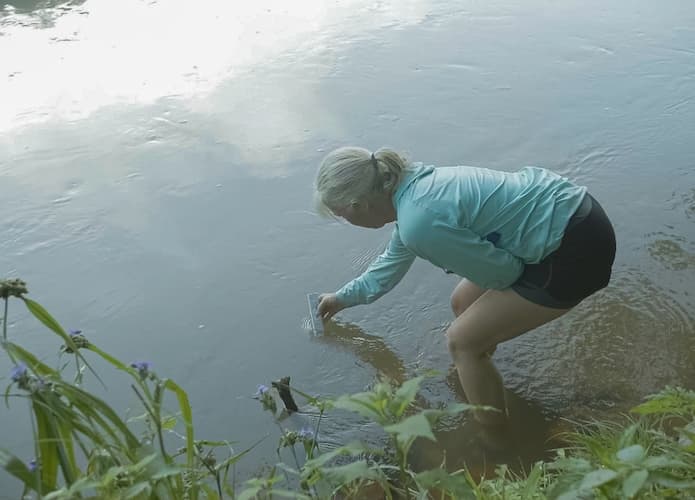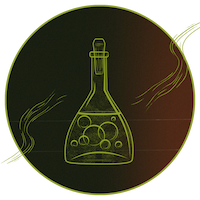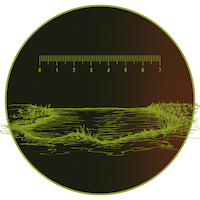
Impact
Statement from Filmmakers:
At first, water awareness seemed like an obvious term—so familiar, in fact, that we rarely questioned what it truly meant. But witnessing Ann’s unwavering dedication to water quality and her commitment to educating others revealed how little we actually understood. As we traveled down the river, the evidence of ecological harm was undeniable. Industrial runoff, agricultural waste, and systemic neglect all converged into a stark reality: our water is in crisis. This journey transformed our vague concept into a lived experience. We hope this film does the same for others—moving “water awareness” from a passive phrase to an urgent call to see, understand, and act.


Water Testing
Throughout her journey down the river, Ann carried a DANOPLUS 6-in-1 water quality meter, a compact, field-ready device that allowed her to test water conditions in real time. This wasn’t just about data—it was about witnessing and documenting the health of the rivers as it changed from one bend to the next. In a story rooted in observation and immersion, this meter became a critical tool—turning invisible threats into visible metrics. It gave us the ability to translate personal encounters with polluted or pristine waters into measurable impacts, creating a bridge between science, storytelling, and environmental urgency.

What It Measures
This handheld device assesses six vital indicators of water quality—each one telling part of a larger story about the health of a river system and the pressures it faces:
- Chemical Oxygen Demand (COD): Measures the amount of oxygen required to break down organic material in the water. High COD levels point to increased pollution from runoff, sewage, or decaying biological matter.
- Total Organic Carbon (TOC): Tracks the concentration of organic compounds present. It reflects not just what's visible in the water, but what’s dissolved within it—offering insight into how much organic waste the water is carrying.
- UV275 Absorbance: Uses ultraviolet light to detect the presence of specific contaminants such as industrial chemicals, oils, and aromatic compounds—often invisible to the naked eye.
- Total Dissolved Solids (TDS): Measures the total amount of dissolved minerals, salts, and ions in the water. High TDS can affect aquatic life and signal contamination.
- Electrical Conductivity (EC): Indicates the water’s ability to conduct electricity, which correlates directly with ion concentration. It's a reliable snapshot of water purity and mineral content.
- Temperature: A foundational parameter that influences every other reading. It helps detect thermal pollution and signals ecological stress in aquatic environments.
Each of these measurements reveals a layer of the river’s story—from the chemical traces of upstream development to the subtle signatures of environmental imbalance.

Why It Matters
As the journey unfolded, so did the data. The meter exposed alarming levels of pollution in some areas—organic waste, chemical runoff, and dissolved contaminants that tell a deeper story about land use, industry, and human impact. These measurements didn’t just confirm what we were seeing; they revealed what we couldn’t. In places where the water looked clear, the numbers told a different story—of stress beneath the surface, of waters absorbing more than they could handle.
This testing process transformed abstract terms like water pollution and environmental degradation into something tactile and immediate. It showed us that environmental harm doesn’t always announce itself—it accumulates quietly, until the system begins to break down. By incorporating this tool, our hope is that these measurements help viewers understand what’s really at stake—and how urgent the need is to protect and restore our waterways before the damage becomes irreversible.

Take Action
Ann’s journey and her water testing uncovered the quiet, cumulative damage hiding in our rivers.
Now it’s your turn.
→ Support local watershed organizations doing the work on the ground: These groups are monitoring, restoring, and defending the rivers that flow through our communities. Explore and support the ones near you:
- American Rivers
- New River Conservancy
- Catawba Riverkeeper Foundation
- West Virginia Rivers Coalition
- Kentucky Waterways Alliance
- Riverkeepers of Ohio
- Friends of the Mississippi River
- Lower Mississippi Riverkeeper
→ Advocate for clean water protections at the state and federal level.
→ Get involved in citizen science and local cleanup efforts.
→ Share Ann’s story to inspire awareness and action in your own watershed.
The rivers can’t speak—but we can. Let’s protect them, before it’s too late.